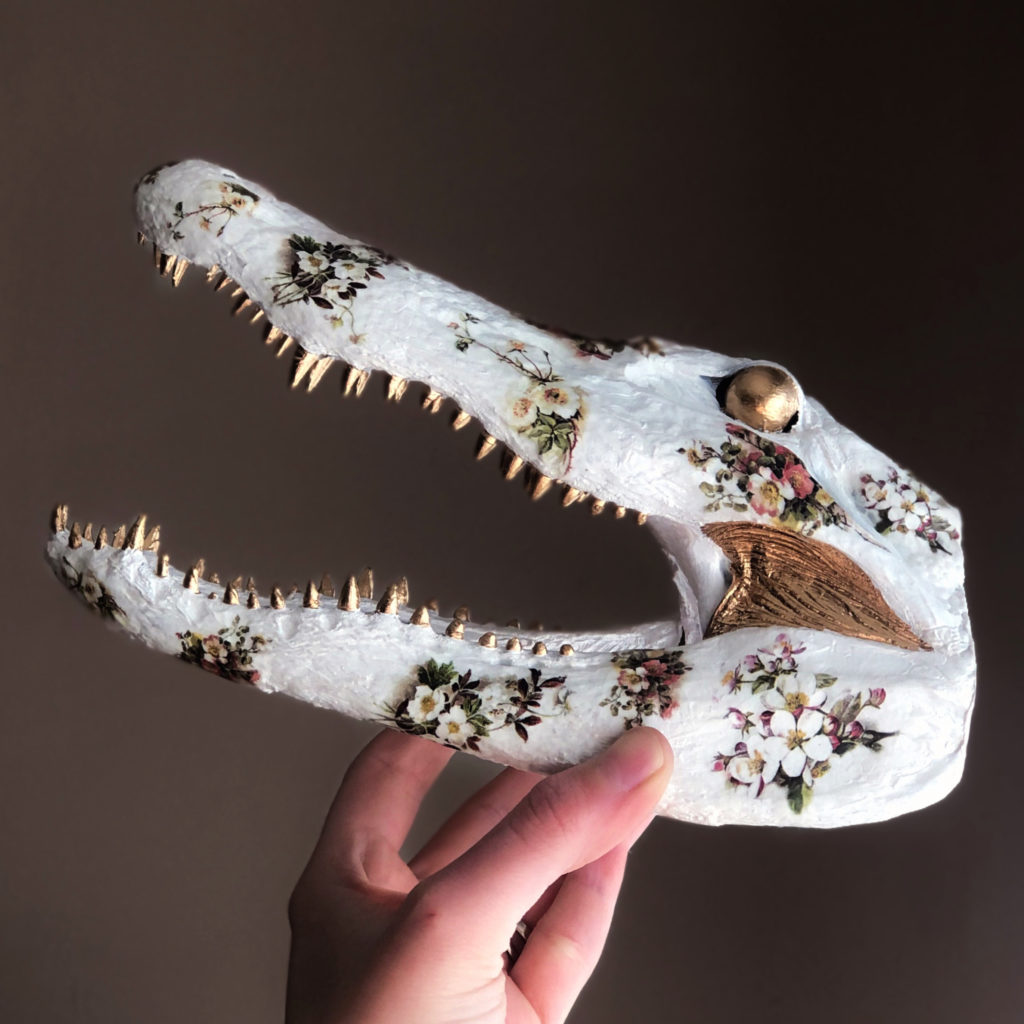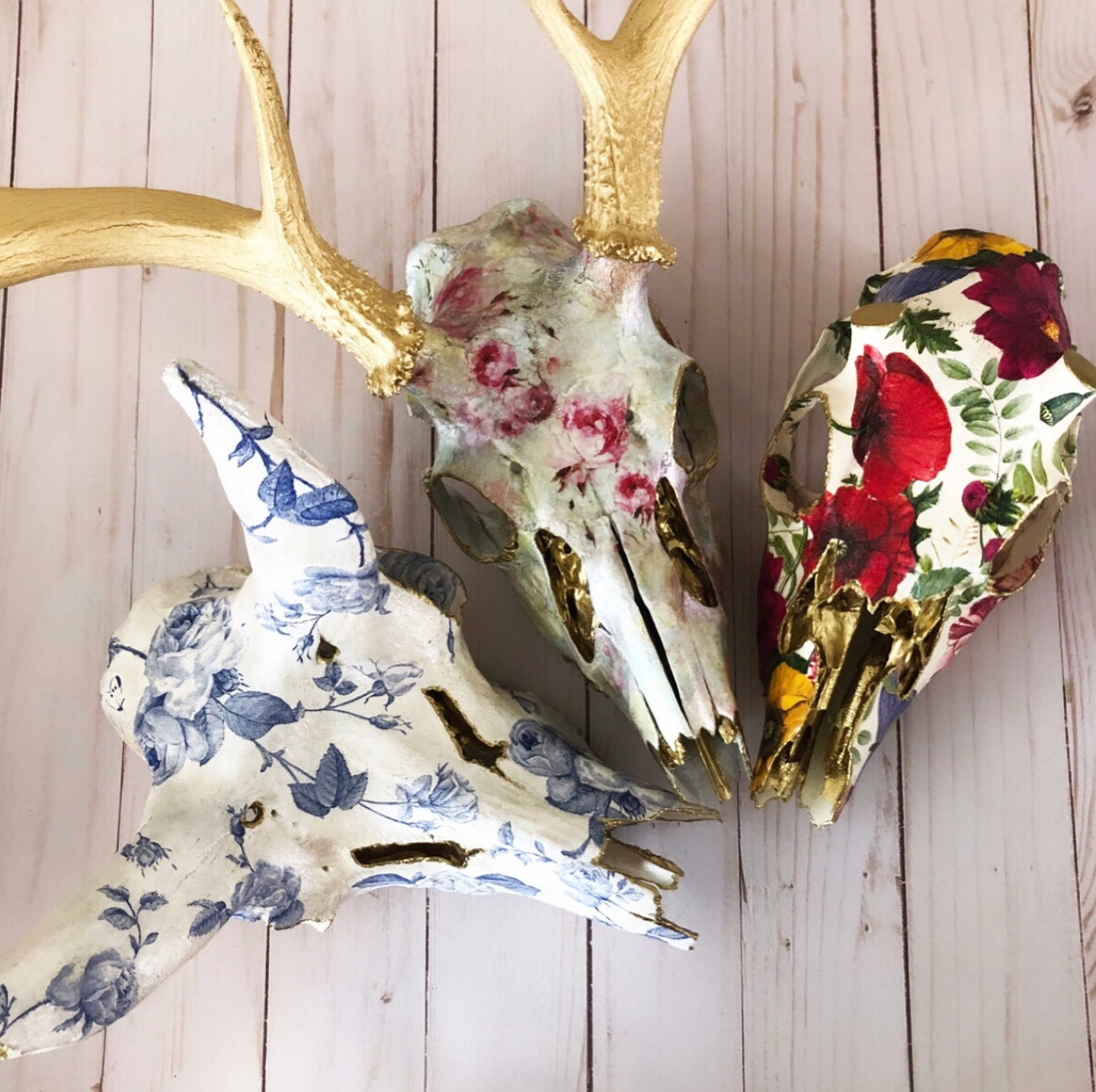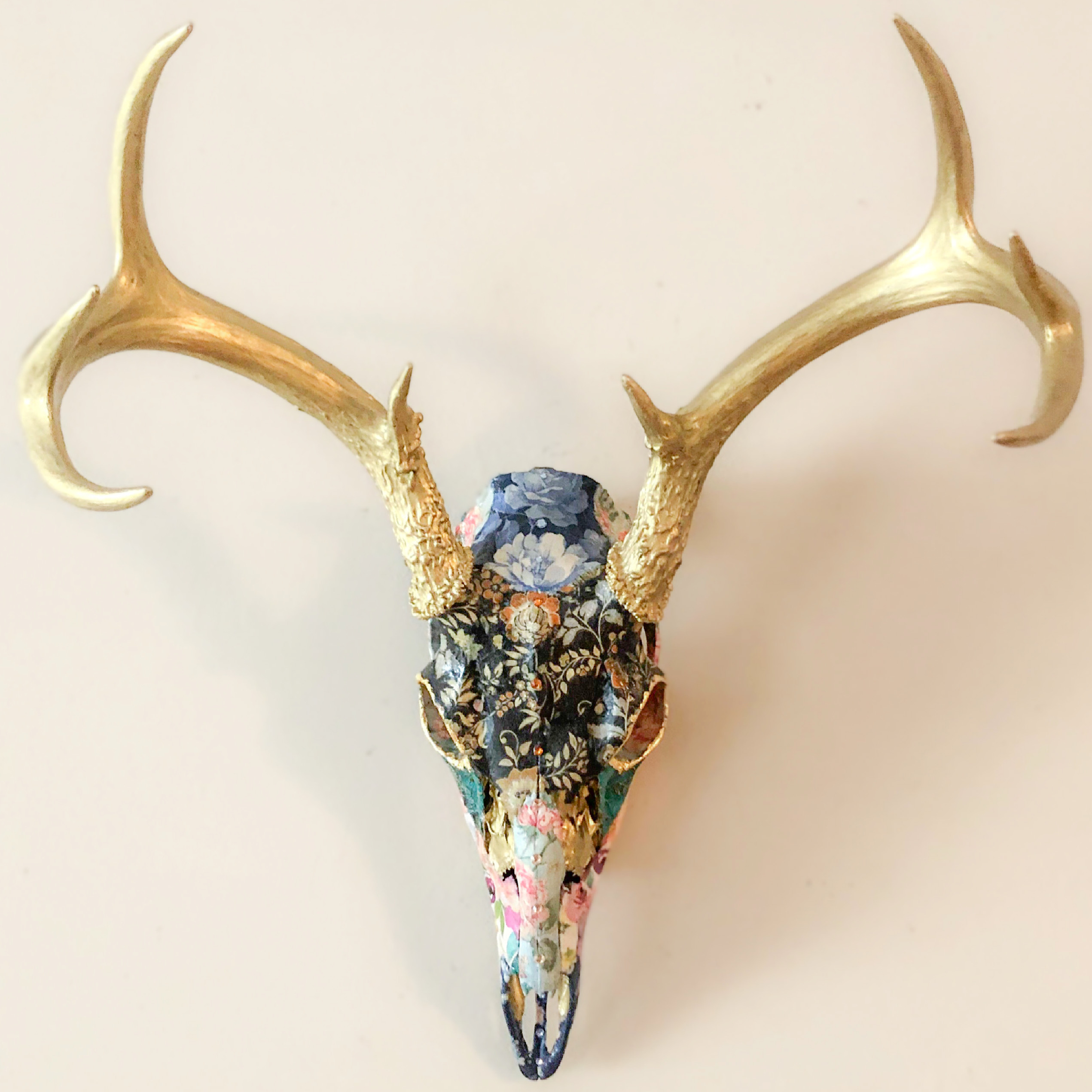
Kathryn Littlejohn never intended to become an artist. “I had a creative mind, but that was as far as it went,” she says. “I was a high school dropout, with absolutely no prior knowledge of how to make anything, really.” She changed course when she began doing art projects with her kids, whom she homeschools on their West Virginia farm. Littlejohn remembered a white doe skull that her husband found on the mountainside of their holler. She painted it while her kids painted rocks, and now, several years later, she has completed scores of similar works.
Most of the skulls she paints come from the wilderness near her home, but she also makes use of carcasses left behind by hunters. Littlejohn ensures all bones are ethically sourced — or would otherwise be thrown out. “Nothing is ever harmed for my art,” she says. Littlejohn allows the skulls themselves to guide her process as she applies paint and organic matter like moss and dirt to capture a sense of place and the singular nature of the animal. “Every skull has its own characteristics and is worthy of its own special design,” she says. Gilded horns that crown jewel-encrusted heads amid a background of painted floral patterning are characteristic of her pieces. She understands that her work might make some viewers uncomfortable but hopes that it might also encourage them to consider the beauty inherent in the life cycle and see “that the wildlife I work with is being honored and respected.”



